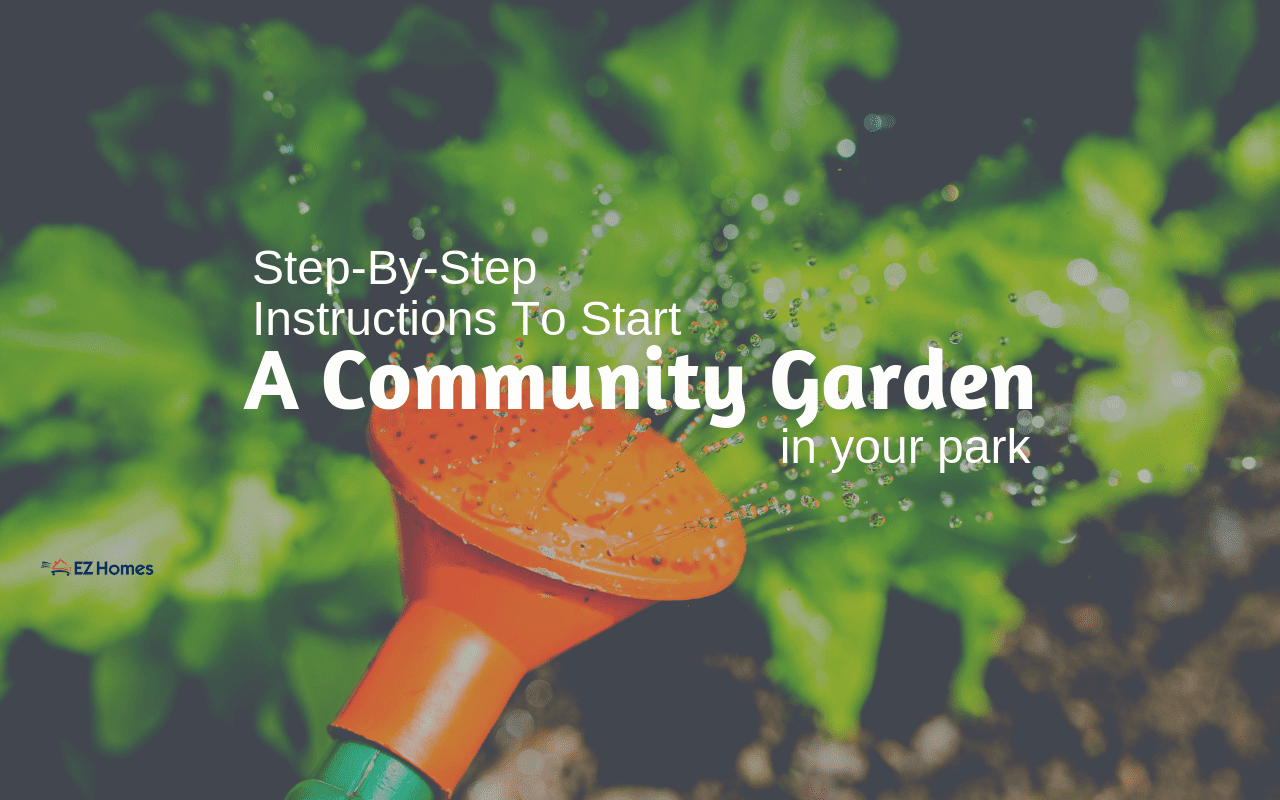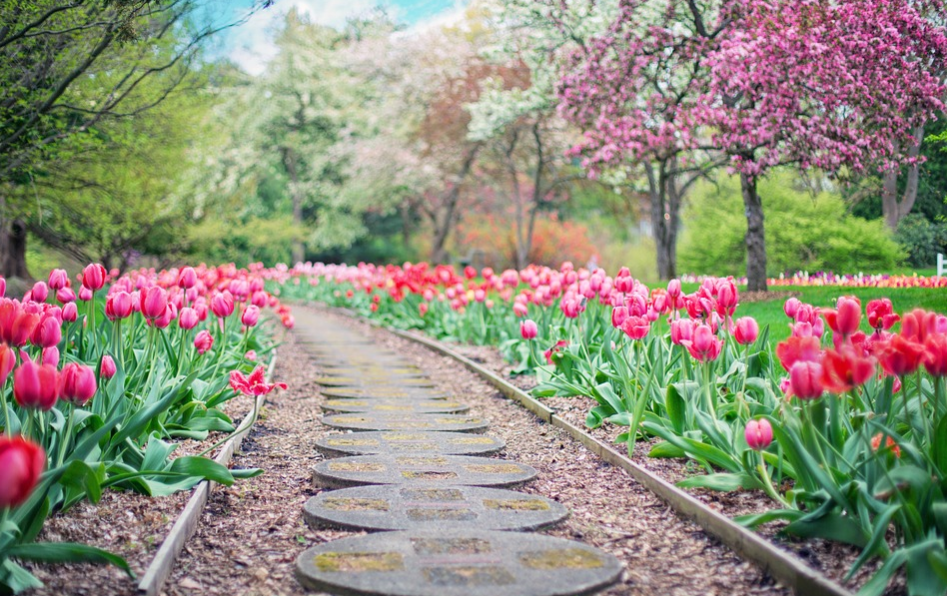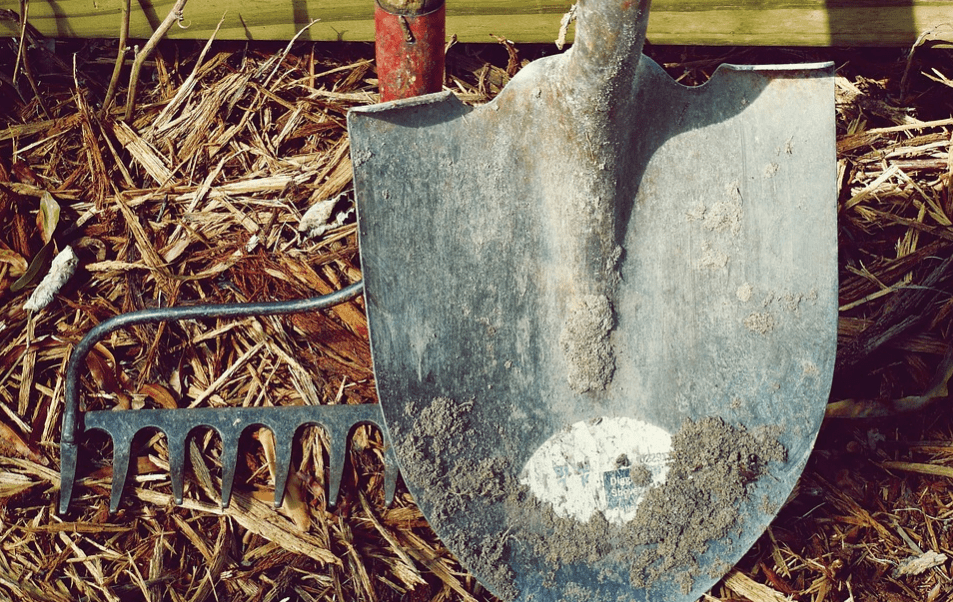Who doesn’t like a beautiful garden to walk through or sit in and enjoy the sights and sounds of nature? Unfortunately, not everyone has the time or skills to maintain their own. On top of that, mobile home parks have the unfair stereotype of being lifeless and dull. As a committed mobile home landlord who wants to provide the best mobile home park living experience, a community garden could be the perfect way to kill two birds with one stone.

You might not be convinced that such a big project is worth it. However, these are just some of the other benefits a community garden can have for your park:
- It can raise the “curb appeal” of your park.
- It can make your park more appealing to potential tenants and raise the value.
- A garden to walk through can be a great source of exercise for the elderly.
- It can create a communal space for your tenants to interact and build community spirit.
- A garden has been shown to increase the happiness of people that live in or near it.
- It can provide healthy options for your residents’ food choices.
- The project itself can be a great coming-together opportunity for your park and a spirit building exercise.
So, without further ado, let’s get those green fingers in your park going!
Step 1: Talk to your residents
The first thing you should do is try and gather up your residents to talk a bit about the garden. Some residents might have concerns they want to raise or contributions they want to make. Even with the minimum amount of community involvement, it will still be a long process and a part of the community that may affect peoples’ lives in one way or another.
Make sure that you cover the following at the very least:
- Who is in favor of the garden and who isn’t? What is their motivation for feeling either way?
- What kind of garden would most prefer? A produce garden with vegetables and fruits, a walking garden, flower, trees, or any other type?
- Are there any groups that deserve special consideration, e.g. the elderly, kids, etc.?
- How involved do the community members want to be in creating and managing the park?
- Is anyone willing to make donations in terms of money or supplies or manpower to help make it happen?
- Choose a name for the garden.
- If there is enough time, this is also an ideal opportunity to move on to the next step or to set a date where you can take the next step.
Step 2: Set up a planning committee
Running a mobile home park is no walk in the park. As the manager/owner, you’re probably already strapped for time taking care of the day to day running of the park as well as the business side of things. This doesn’t leave a lot of free time to tackle a big project like a community garden on your own.
Not only will setting up a committee help you complete this task, but it will also go further to get the rest of the park residents involved. It will be up to you to decide what powers the committee does or doesn’t have, and of course, the final decision will always rest with you. However, multiple members helping to plan the garden will probably result in a quicker process and the added community involvement will mean you truly end up creating a garden that suits everyone.
Different members can be in charge of different aspects. These might include: finances, assembling volunteers, the actual landscaping, or communicating the progress with the community.
Step 3: Decide on a goal
The first thing you, or your committee, will need to do is to come up with a specific goal for the garden. Hopefully, you got enough feedback at your community meeting to have a clear understanding of your resident’s hopes, needs, and wants. However, as the manager, you obviously still have a say in what kind of garden you’ll have in the park.
For example, if you initiated the idea in the first place it might be because you thought a beautiful garden would make your park more attractive. In that case, you don’t want a vegetable patch. However, you can always reach some sort of compromise.

You will also want to adjust your goal according to your residents so that you don’t exclude anyone, such as the elderly, because of bad accessibility. Whatever you decide, make sure the goal is clear to your committee and your residents to manage expectations and keep the project on track.
Step 3: Find the perfect spot
Of course, you’ll need to find some available space in your park to create your garden. This may not be as easy as picking any bare patch of soil. Remember that you’ll need to set up irrigation at the site and you’ll want to make it as easy to reach for as many of your residents as possible. If it’s a purely aesthetic garden, you might also want it as near to the entrance of your park as possible.
You’ll need to make some practical considerations as well. For example, will it be easy to install irrigation in that area or does it receive enough sunlight? For most plants, the more sunlight, the better. So, you definitely don’t want to create your garden in the shadow of other buildings, trees, etc.
You might also want to test the soil to determine whether it’s suitable or not. All kinds of factors affect the suitability of the soil such as the pH balance and drainage.
Step 4: Come up with a concept or landscape
Next, you’ll need to decide exactly what will go into your garden and how it will look. Obviously, this will be heavily influenced by the goals you established for your garden. If it’s a produce garden, you’ll need to find out what to grow and which plants can serve multiple purposes as pest-deterrents, shade-givers, or eye-pleasers. Then, divide the plot logically into patches for various vegetables. The biggest decision you will need to make is exactly what produce to plant.
On the other hand, if you want to landscape a beautiful community garden for walking or relaxing, you’ll need to get out the drawing board. You’ll want to draw out your walkways, mounds, water features, etc. as well as decide where what plants will go for maximum effect. It’s advisable to have a separate sub-committee for this or a single person as leaving it up to everyone can become an organizational mess.
However, no matter what type of garden you’ll implement, you need to do some research to determine which plants grow best in your climate. Also, assess the water needs of plants so that you don’t create an overly thirsty garden that becomes a drain on your utility bill every month. This could also help you create a theme for your garden such as a desert garden, Mediterranean garden, etc.
Not only that, but certain plants don’t grow well together and you’ll need to make sure you only plant compatible plants in the same spot or next to each other. Different plants also need a different amount of room to grow or to spread their roots. You’ll also need to decide whether you’ll be planting for specific seasons, perennials, or plants that are evergreen.
Here are some more tips by Real Homes on how to choose the right plants for your garden.
Step 4: Take stock of your available resources and identify your needs
Next up, you’ll need to start listing down what you already have, and what you need, to complete your community garden. This can include:
- What plants will you grow in your garden?
- Does anyone already have plants to donate to the garden?
- How much time can your own groundskeeping staff spare for the project?
- How many volunteers in your community are there and how many hours/days can they commit?
- Do you have anyone in the community with real/professional experience as a gardener, landscaper, etc. that you can get help from?
- Roughly how much will the total cost of the project be?
- Do you need any extra gardening or landscaping equipment?
- Do you need any greenhouse material or equipment?
- Where can you cheaply source plants from within your community?
- What kind of (and how much) fertilizer will you need?
You may also want to turn to the local authorities or businesses to ask if you are eligible for any grants or whether anyone wants to sponsor your garden. You’d be surprised at how many local businesses are willing to spare some money in order to make their community a better place and gain a little extra publicity.
Step 7: Start developing the plot
Before you begin, you should make sure that it’s the appropriate season to start planting to get the most out of your garden.
Pre-step: Organize a work crew or volunteers

Before you can seriously tackle this project, you’ll need to organize your participants. Hopefully, you already have a list of volunteers and know when they are willing and able to help. This will help you to create a schedule of when what is needed from whom and when who needs to report to work in the garden.
Make sure that you create teams that are sufficiently large to tackle every day’s tasks so that you don’t overwork anyone. Also, try to be fair and give everyone equal opportunity to contribute. Make sure that you have breaks worked in every day for safety and to not make it feel like punishment. You may also want to organize refreshments on days that people will be working.
Step 2: Cleanup and mark the area
Your first step will be to clean up the lot and make sure that all the space you need for the garden is available. The next step will be to properly cordon off the area that will be used for your garden. If you have any fixtures, such as walkways, water fixtures, or separate areas, then you’ll want to mark them off somehow. This will help you map out your landscape in a more illustrative way. It also involves removing any weeds, roots and all.
Step 3: Prepare the soil
Now that you have your garden area ready, it’s time to prepare the soil for the actual landscaping. This means digging out where you need to dig out, creating garden beds, leveling out the ground where your pathways will be, etc. Unless there is some heavy weather incoming, you could prepare the soil sometime before planting if you can’t fit it all into one day.
Step 4: Plant your new community garden!
Once everything is in place, it’s finally time to plant the seeds for your new community garden. This day should really be an exciting and celebratory day and not feel like hard labor. Who can deny the excitement of planting the seeds of what could be a beautiful new garden?
If at all possible, you should try and get as many members of your community involved in this day. Dole out seeds or plants and let everyone take a turn planting some. You’ll even be surprised to see how much the kids love it! Remember to properly fertilize the soil beforehand and to treat for any pests if necessary.
Step 8: Come up with garden rules
Unfortunately, the condition and longevity of your park aren’t guaranteed. To ensure that your garden is a binding force in your park and not a point of contention, you’ll need to lay down some ground rules. What these are can depend on the purpose of the park. For example, if your garden includes some grassy lawns for people to relax or picnic on, then walking on it is welcome. However, if it’s just part of the scenery, you might want to make it a no-go zone.
Some of the common rules you’ll need to establish are:
- Who can use the garden
- During what times it can be used
- Where you may and may not tread in the garden
- Any banned activities, such as no ball throwing, etc.
Step 9: Going forward
Technically, you should have considered the future of your garden before actually creating it. You’ll need to consider who will be responsible for the maintenance, how much of it will be needed, prepare for the extra water usage costs, etc.

While it may sound like a great idea to have the community care for the garden according to a schedule, it might not be. It only takes a few community members to miss their obligations to do some real damage that requires extra time and money to fix. However, if you trust your community enough and it’s a small and manageable enough garden, then go for it.
Bring your park to life with a new community garden!
You’d be surprised at a what a huge difference a newly grown garden will make to your park. It’ll be noticeable once the flowers start to bloom or the plants start to take shape. Not only will your park benefit from an aesthetic and material perspective, but you’ll improve the living experience of every single community member! There are many other ways to improve your community which could help improve the tenancy of your park. However, a community garden might just be the most beautiful of the bunch!


